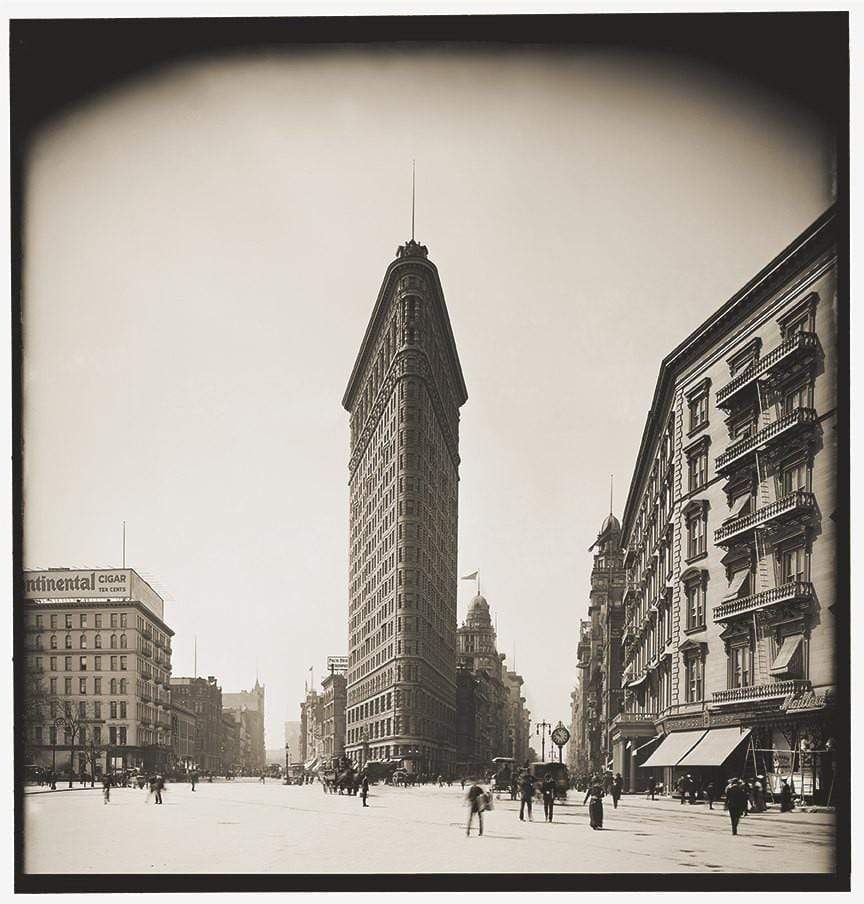Your Cart is Empty
Free and Fast Shipping | 30 Day Money Back Guarantee
Free and Fast Shipping | 30 Day Money Back Guarantee
Free and Fast Shipping | 30 Day Money Back Guarantee

3 min read
New York City, a sprawling metropolis famed for its skyline, is home to some of the world's most iconic buildings. Each structure tells a story, a narrative woven into the fabric of the city's history, culture, and architectural advancements. This article delves into the history of four such marvels: The original Hotel Astoria, 30 Rockefeller Center, the Singer Building, and the Flatiron Building, exploring their significance and the roles they've played in shaping New York City's architectural legacy.

The original Hotel Astoria, part of the Waldorf-Astoria, epitomizes the grandeur of New York City's Gilded Age. Opened in 1897 by William Waldorf Astor, the hotel was an emblem of unparalleled luxury and a meeting ground for the elite. Constructed as a response to a family feud, the Astoria section, erected by his cousin John Jacob Astor IV, stood adjacent to the Waldorf Hotel, forming the Waldorf-Astoria. The hotel was not just a place of lodging but a landmark that symbolized the height of social and architectural achievement. Unfortunately, the original building made way for progress, demolished in 1929 to make room for the Empire State Building. Nonetheless, its legacy endures, representing a bygone era of splendor and opulence. Read more about its interesting history here.

30 Rockefeller Center, the cornerstone of the Rockefeller Complex, stands as a testament to American resilience and innovation. Completed in 1933 during the Great Depression, this Art Deco skyscraper, also known as the Comcast Building, was envisioned by John D. Rockefeller Jr. as a beacon of hope and progress. The building is not only an architectural marvel but also a cultural hub, housing the NBC studios, the famous Rainbow Room, and an observation deck offering panoramic views of the city. Its construction provided much-needed employment and signaled a belief in New York City's future, making it a symbol of American strength and determination. Read more about "30 Rock" here.

The Singer Building, once the tallest building in the world, is a poignant reminder of the transient nature of record-breaking architecture. Completed in 1908, this 47-story skyscraper served as the headquarters for the Singer Manufacturing Company. Its distinctive Beaux-Arts style, marked by a slender tower and a striking red brick and terra cotta facade, made it a standout feature of the early 20th-century skyline. However, in the relentless pursuit of modernization, the Singer Building was demolished in 1968, making way for the construction of One Liberty Plaza. Its destruction marked the first time a skyscraper of such height was intentionally torn down, highlighting the city's evolving architectural and economic priorities. Read more about the Singer Building here.

Comments will be approved before showing up.
Tha Quality was fantastic❗❗❗
Used grease or lard bucket was carried under rear axle to periodically grease wheel hubs. Very good video.
I'm super impressed how quickly the print got to Canada and the quality is worth every penny. Thank you so much, Gordon Parks is a hero to my partner and I'm sure he will love this surprise
Received as a gift and could not be happier with the quality of the print. Shipping container ensure this arrived in perfect condition.
Love the simplicity and vintage feel of this print. Plus- prickly + beauty theme.
Wow. What an incredible photograph, and I love the story behind it as well. Seller does excellent work, and I couldn't be more pleased.
Amazing photograph and beautifully reproduced. Excellent work and shipped quickly. Thanks so much.
Beautiful photo and amazing quality!
5 stars review from Claire
Image quality and the extent to which the image was packaged securely was perfect. Could not be happier with the product.
This image along with much of Thomas Hines' work is incredibly powerful. The brutality faced by these children makes our everyday hardships seem frivolous.
5 stars review from Pjewc191
Great item. Packed well for shipping. Shipped quickly.
arrived quickly and looks great!
Classic. Framed it, and hung it up.